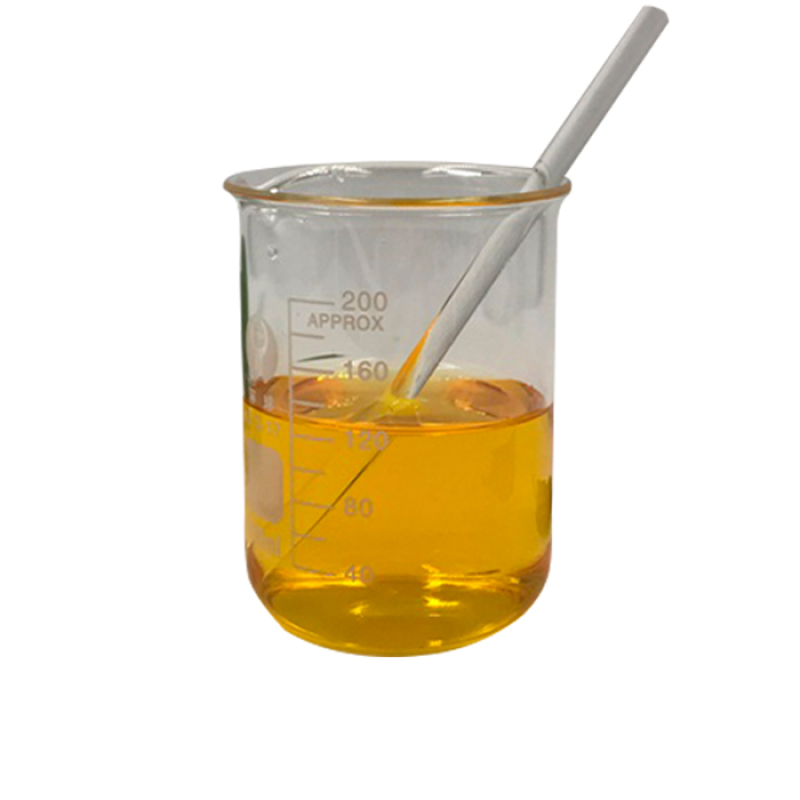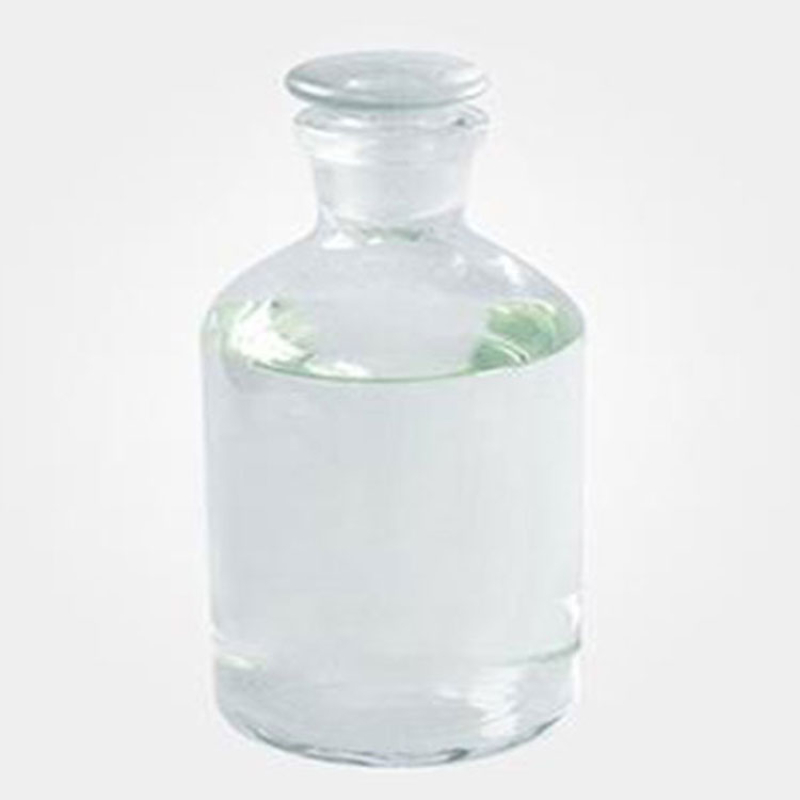Products Description of 2,6-Di-tert-butylphenol CAS#128-39-2White or light yellow crystalline solid with phenol odor. Easily soluble in organic solvents such as alcohols, esters, alkanes, aromatic hydrocarbons, and almost insoluble in water.
Contact Now
Products Description of 2,4-di-tert-butylphenol CAS#96-76-42,4-Di-tert-butylphenol widely exists in plants and is also an important intermediate for fine chemical products. It is mainly used to prepare co-antioxidant 168, and is also used to prepare polyisobutylene, polyamide, polycarbonate, etc.; it is still It can be used to produce antioxidant Chemicalbook (300, 314), ultraviolet absorber, light stabilizer 120, dyes and textile auxiliaries, and 2402 resin.
Contact Now
Products Description of 2,4,6-Tri-tert-butylphenol CAS#732-26-3Organic synthesis. Aviation gas oil antioxidant. Anti-aging agent for natural rubber and synthetic rubber. Low-efficiency stabilizer for synthetic rubber.
Contact Now
Products Description of 2-Tert-Butylphenol CAS#88-18-62-tert-butylphenol, also known as o-tert-butylphenol, is an organic compound with the chemical formula C10H14O.
Contact Now
Products Description of Di-tert-butyl Dicarbonate CAS#24424-99-5BOC anhydride is an organic compound with the molecular formula C10H18O5.
Contact Now
Products Description of 4-tert-Octylphenol CAS#140-66-9It is widely used in the manufacture of oil-soluble octylphenol-formaldehyde resins, surfactants, medicines, pesticides, additives, adhesives, and ink fixatives.4-tert-Octylphenol Chemical PropertiesMelting point 79-82 °C(lit.)Boiling point 175 °C30 mm Hg(lit.)density 0.95 g/cm3 (20℃)vapor pressure 2Pa at 38℃refractive index 1.5003 (estimate)Fp 145 °Cstorage temp. -20°Csolubility water: slightly soluble0.007g/L at 20°Cpka10.15±0.15(Predicted)color White flakesPH Range6 a
Contact Now
Products Description of 4-tert-Amylphenol CAS#80-46-64-tert-Amylphenol is an organic compound characterized by a phenolic structure with a tert-amyl (4-methyl-2-pentyl) group attached to the para position of the benzene ring. It is used in various applications, including as a stabilizer in polymers and as an intermediate in the synthesis of other organic compounds.
Contact Now
Products Description of PTBP CAS#98-54-44-tert-Butylphenol is a white crystalline solid under normal temperature and pressure. It is easily soluble in organic solvents such as ethanol, ether, and benzene, and is insoluble in water.
Contact Now
Products Description of 3,5-Bis-tert-butylsalicylic acid CAS#19715-19-6This product is white powder.
Contact Now
Products Description of Tert-Butyl 1-piperazinecarboxylate CAS#57260-71-6In modern chemical pharmaceuticals, 1-tert-butyloxycarbonylpiperazine plays a very important role because it is an important basic chemical raw material for many antitussive drugs, antiallergic drugs, antipsychotic drugs, antibacterial drugs, various pesticides, etc.
Contact Now
Products Description of 4-(4-Aminobenzyl)piperazine-1-carboxylic acid tert-butyl ester CAS#304897-49-24-(4-Aminobenzyl)piperazine-1-carboxylic acid tert-butyl ester is a carboxylic acid ester derivative and can be used as a pharmaceutical intermediate.4-(4-Aminobenzyl)piperazine-1-carboxylic acid tert-butyl ester Chemical PropertiesBoiling point 413.6±40.0 °C(Predicted)density 1.136±0.06 g/cm3(Predicted)storage temp. under inert gas (nitrogen or Argon) at 2–8 °Cpka7.16±0.10(Predicted)Safety InformationHS Code 2933599590Product Application of 4-(4-Aminobenzyl
Contact Now
Tert-Butyl Methyl Ether CAS# 1634-04-4Methyl tert-butyl ether (MTBE) is a colorless liquid with a distinctive, unpleasant odor. It is made from mixing chemical substances such as isobutylene and methanol, and has been used considering the fact that the Nineteen Eighties as an additive for unleaded gasolines to obtain extra environment friendly burning.MTBE is additionally used to dissolve gallstones.
Contact Now
Products Description of N,N-Di-Sec-Butyl-P-Phenylenediamine CAS#101-96-2N,N-di-sec-butyl-p-phenylenediamine is a brown-red liquid. It is an amine antioxidant with excellent properties. It is especially suitable for use as an additive for cracking or thermal cracking gasoline (gasoline with high olefin content). It can effectively prevent olefin oxidation. Produce gel.
Contact Now
Antioxidant 1035 Chemical PropertiesMelting point 78 °CBoiling point 659.4±55.0 °C(Predicted)density 1.072±0.06 g/cm3(Predicted)storage temp. Sealed in dry,Room Temperaturesolubility DMSO (Slightly), Methanol (Slightly)form Solidpka12.02±0.40(Predicted)color White to Off-WhiteCAS DataBase Reference41484-35-9(CAS DataBase Reference)EPA Substance Registry SystemThiodi-2,1-ethanediyl bis[3,5-di-tert-butyl-4-hydroxyhydrocinnamate] (41484-35-9)Safety InformationRTECS DA8342500HS Code 2930.90.2900Factory and Equipment ShowFast delivery timeInventory 2-3 w
Contact Now
Products Description of tert-Butyl hydroperoxide CAS#75-91-2Tert-butyl hydroperoxide, also known as tert-butanol hydroperoxide, is an organic compound with the chemical formula C4H10O2. It is a colorless and transparent liquid, slightly soluble in water, and easily soluble in most organic solvents such as ethanol and ether.
Contact Now
2-(2-Tert-Butylaminoethoxy)ethanol CAS# 87787-67-5It is widely used in the selective desulfurization of oil refinery gas, natural gas, etc. Its compound solvent is particularly suitable for the purification of oil field associated gas with high organic sulfur content. The compound solvent has a good organic sulfur removal effect, and the organic sulfur removal rate can be greater than 95%. There is no foaming and no corrosion during use.
Contact Now
Products Description of 2,5-Bis(5-tert-butyl-2-benzoxazolyl)thiophene CAS#7128-64-5This product is yellow-green powder. Melting point 200-201℃, decomposition temperature greater than 220℃. Insoluble in water, soluble in alkanes, fats, mineral oils, waxes and common organic solvents. Solubility/(g/100ml): methanol 0.05; acetone 0Chemicalbook.5; toluene 5.3; carbon tetrachloride 5.9; tetrahydrofuran 5.5; DMF 0.8; chlorobenzene 10.2; cyclohexane 3.3; xylene 5.5; dioctyl phthalate 0.7; water 0.01.
Contact Now
Products Description of Dibutylamine CAS#111-92-2Pure di-n-butylamine is a colorless liquid, m.p.-60℃ (-61.9℃), b.p.159℃ (48℃/1.73kPa), n20D1.4177, relative density 0.767 (20℃), f.p.41℃, soluble in water, acetone and benzene, and easily soluble in ethanol and ether.Dibutylamine Chemical PropertiesMelting point −62 °C(lit.)Boiling point 159 °C(lit.)density 0.767 g/mL at 25 °C(lit.)vapor density 4.46 (vs air)vapor pressure 1.9 mm Hg ( 20 °C)refractive index n20/D 1.417(lit.)Fp 106 °Fstorage temp. Store below +30°C.so
Contact Now
Products Description of Bis(2-ethylhexyl) phosphate CAS#298-07-7 Di(2-ethylhexyl) phosphate is a chemical substance. It is a viscous oily liquid with strong acidity.
Contact Now
Products Description of Lithium Aluminum Hydride CAS#16853-85-3Lithium aluminum hydride is a commonly used reducing agent in organic chemistry. It can reduce a variety of functional group compounds. It can also act on double-bond and triple-bond compounds to achieve hydroalumination. In addition, lithium aluminum hydride can also participate in the reaction as a base. For example, react LiAlH4 with 2 mol of ethanol to generate lithium diethoxyaluminum hydride [LiAlH2(OC2H5)2]; react with 3 mol of tert-butanol to generate lithium tri-tert-butoxyaluminum LiAlH[OC(CH3)3]3.
Contact Now
Products Description of 4-Hydroxycoumarin CAS#1076-38-64-Hydroxycoumarin is a coumarin derivative, one of the most versatile heterocyclic scaffolds, commonly used in the synthesis of various organic compounds. 4-Hydroxycoumarin has electrophilic and nucleophilic properties. 4-Hydroxycoumarin appears as slightly yellow needle-shaped crystals.
Contact Now
Products Description of 4-Chlorophenethylamine CAS#156-41-24-Chlorophenethylamine is an organic compound with the molecular formula: C8H11ClN.Chemical PropertiesBoiling point 60-65 °C0.1 mm Hg(lit.)density 1.112 g/mL at 25 °C(lit.)refractive index n20/D 1.548(lit.)Fp 223 °Fstorage temp. Store Coldpka9.72±0.10(Predicted)form Liquidcolor Clear colorless to yellowSpecific Gravity1.12BRN 508247InChIKeySRXFXCKTIGELTI-UHFFFAOYSA-NCAS DataBase Reference156-41-2(CAS DataBase Reference)Safety InformationHazard Codes Xi
Contact Now
Products Description of 4-Acryloylmorpholine CAS#5117-12-4N-Acryloylmorpholine is a chemical substance with the molecular formula C7H11NO2.4-Acryloylmorpholine Chemical PropertiesMelting point −35 °C(lit.)Boiling point 158°C 50mmdensity 1.122 g/mL at 25 °C(lit.)vapor pressure 1.03-1.64Pa at 25-29.9℃refractive index n20/D 1.512(lit.)Fp >230 °Fstorage temp. 2-8°Csolubility Soluble in waterpka-1.08±0.20(Predicted)form Liquidcolor Colorless to yellowWater Solubility 1000g/L at 20℃Sensitive Light Sensi
Contact Now
Products Description of LANTHANUM ACETATECAS#917-70-4White powderLANTHANUM ACETATE Chemical Propertiesdensity 2.02[at 20℃]Water Solubility 100g/L at 20℃CAS DataBase Reference917-70-4(CAS DataBase Reference)EPA Substance Registry SystemLanthanum acetate (917-70-4)Factory and Equipment ShowFast delivery timeInventory 2-3 working days New production 7-10 working days
Contact Now































